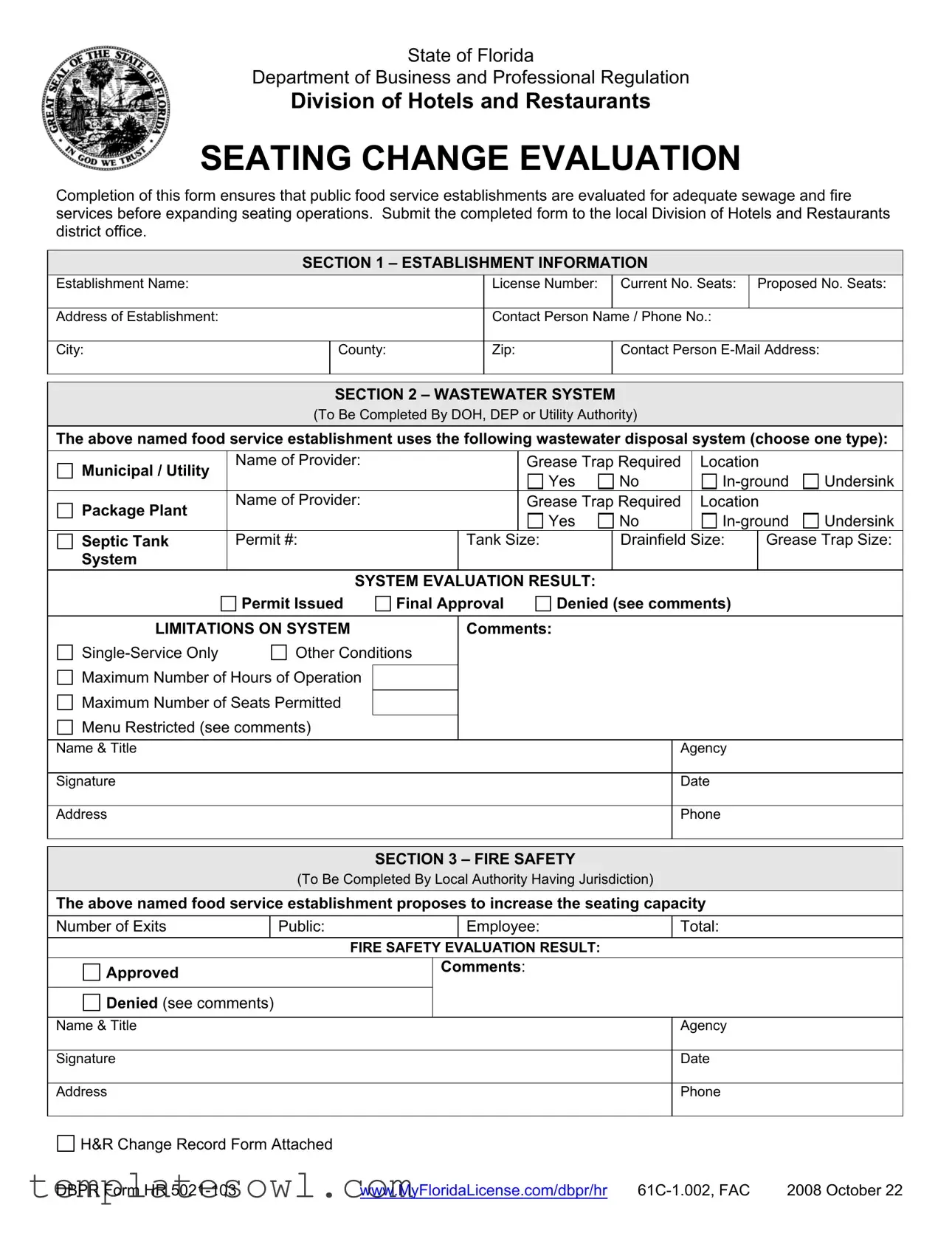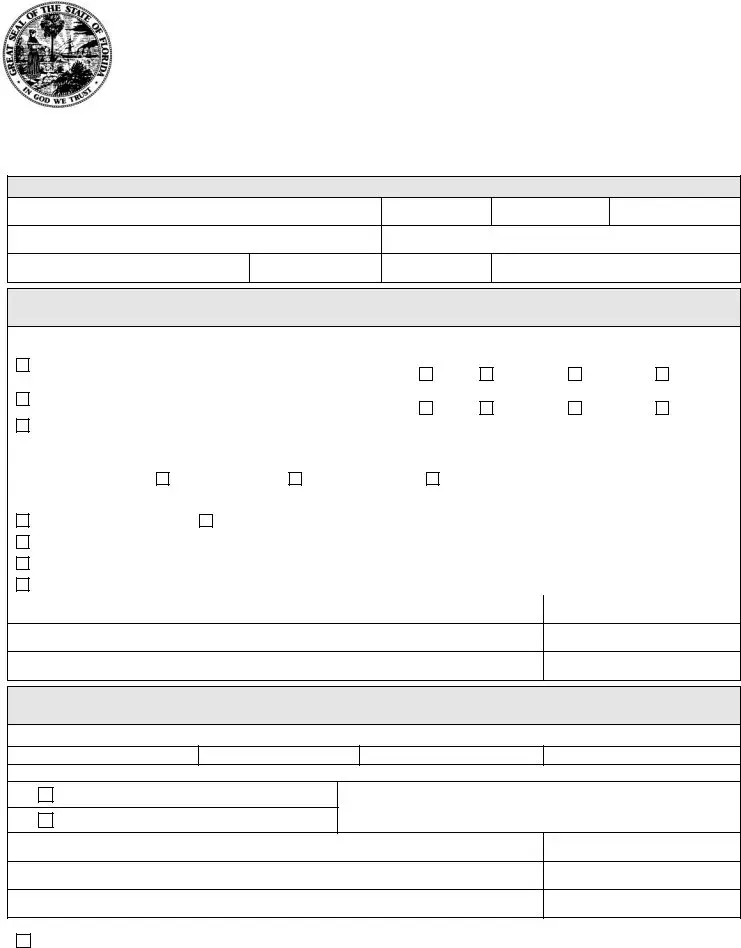What is the purpose of the DBPR HR 5021 103 form?
The DBPR HR 5021 103 form is designed for public food service establishments in Florida that plan to expand their seating capacity. The form ensures that these establishments are evaluated for adequate sewage and fire services before proceeding with the expansion. This step helps to maintain health and safety standards within the community.
Where should I submit the completed form?
After completing the DBPR HR 5021 103 form, it should be submitted to the local Division of Hotels and Restaurants district office. This ensures that the appropriate authorities can evaluate the facility based on current health and safety regulations.
What information is required in Section 1 of the form?
Section 1 requires details about the establishment, including the name, license number, current and proposed number of seats, address, and contact person information. This information helps local authorities identify and assess the establishment accurately.
How is the wastewater system evaluated?
The evaluation of the wastewater system is completed by the Department of Health (DOH), Department of Environmental Protection (DEP), or the Utility Authority. The form includes options to specify the type of wastewater disposal system used. Information such as permit numbers, tank sizes, and grease trap requirements must be provided to facilitate this evaluation.
What happens if the wastewater system fails the evaluation?
If the wastewater system does not meet the necessary requirements, the evaluation result will indicate "Denied" along with relevant comments. Limitations may be placed on the system, which can include restricted menu options, maximum hours of operation, and maximum seating capacity until compliance is achieved.
What is assessed in the fire safety evaluation section?
Fire safety evaluation assesses the proposed increase in seating capacity concerning fire safety regulations. It includes information about the number of exits for both the public and employees. A local authority reviews this section to ensure that the establishment can safely accommodate its patrons in case of an emergency.
What should I do if my fire safety evaluation is denied?
If the fire safety evaluation result is "Denied," the comments provided should be reviewed to understand the reasons behind this decision. The establishment will need to address the concerns listed and may require further modifications to meet fire safety requirements before reapplying.
Are there any follow-up documents required along with the form?
Yes, the form requires the submission of the H&R Change Record Form as an attachment. This additional document supports the evaluation process and helps maintain accurate records for the establishment's change in seating capacity.

